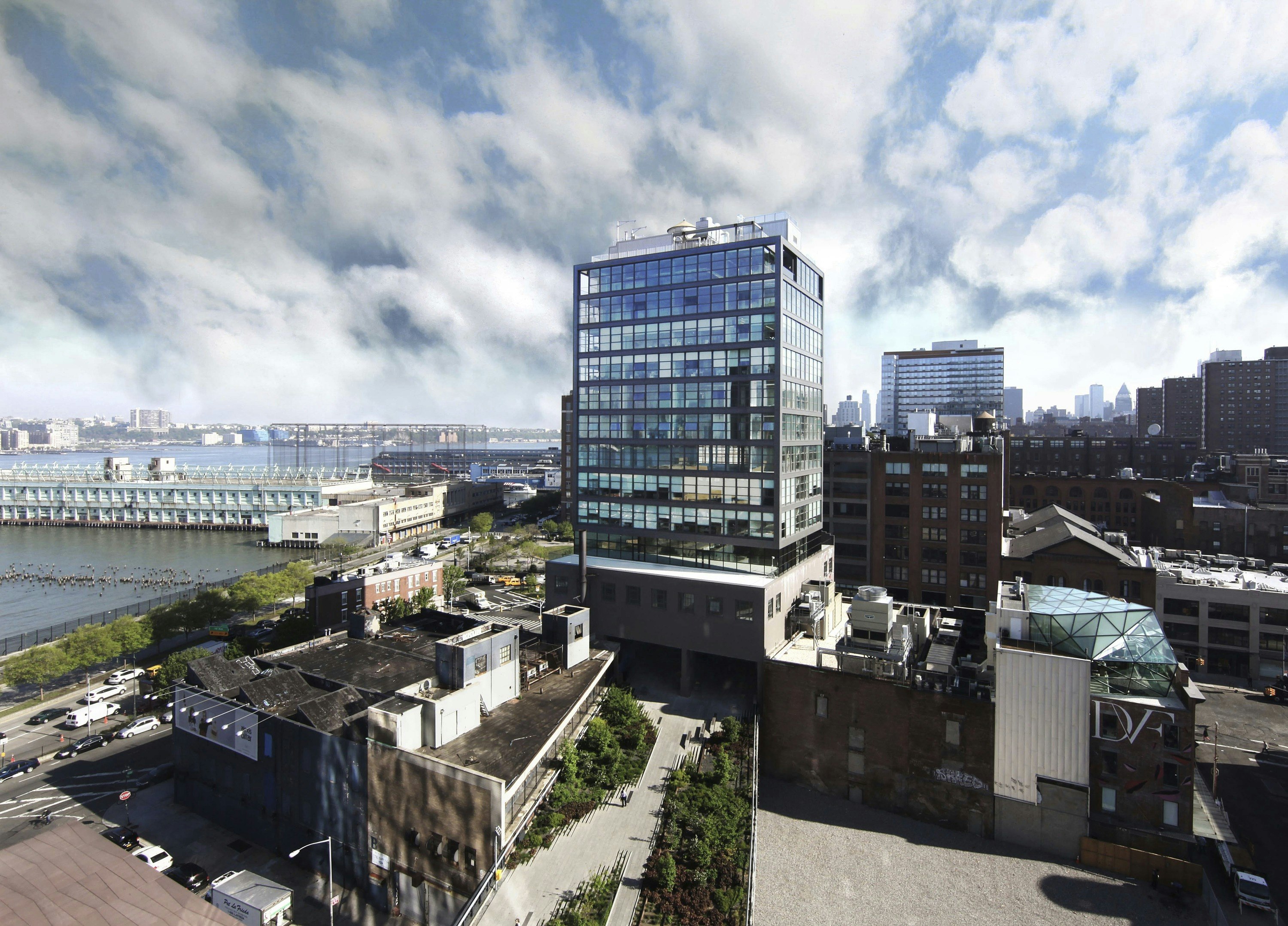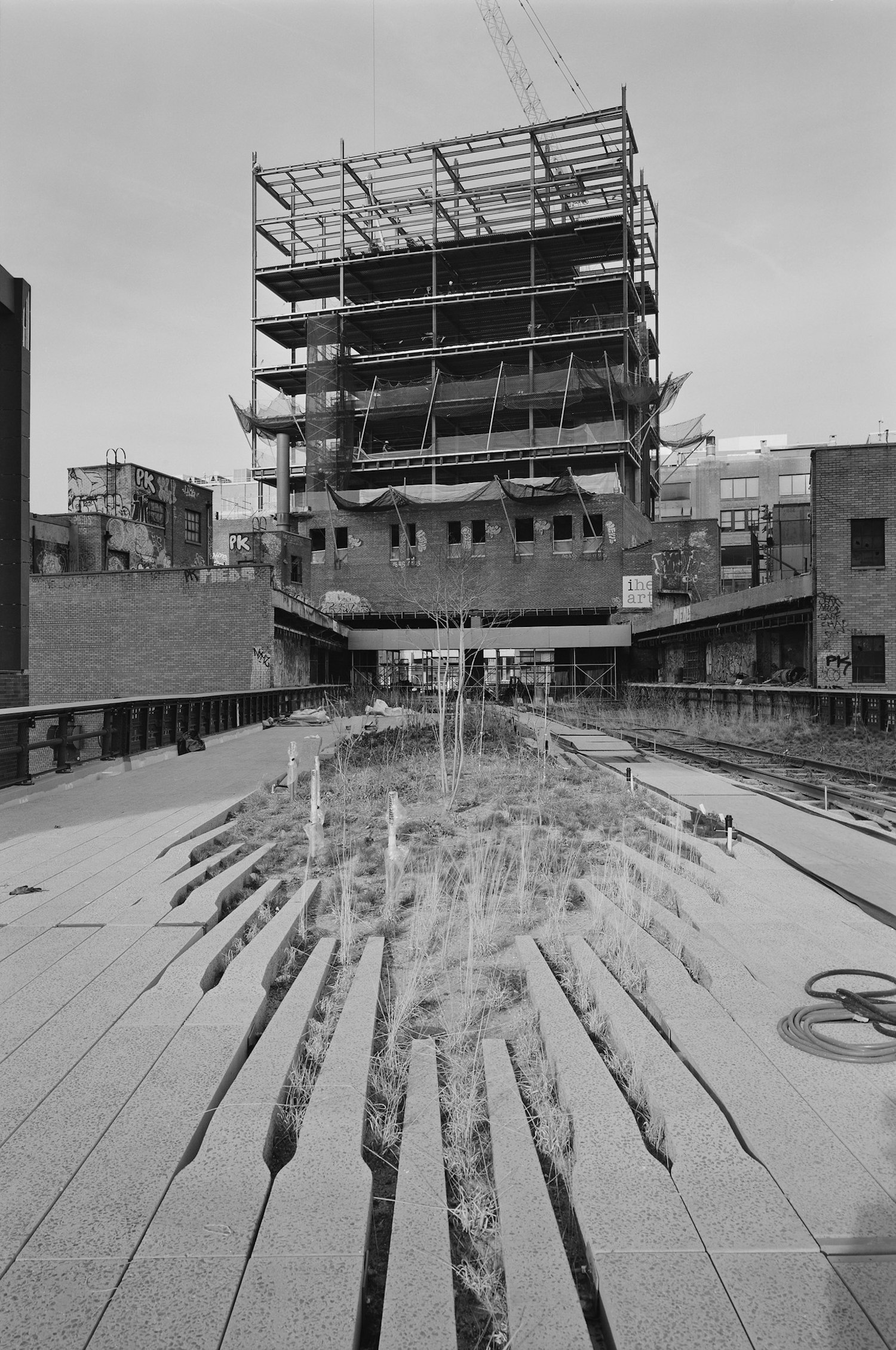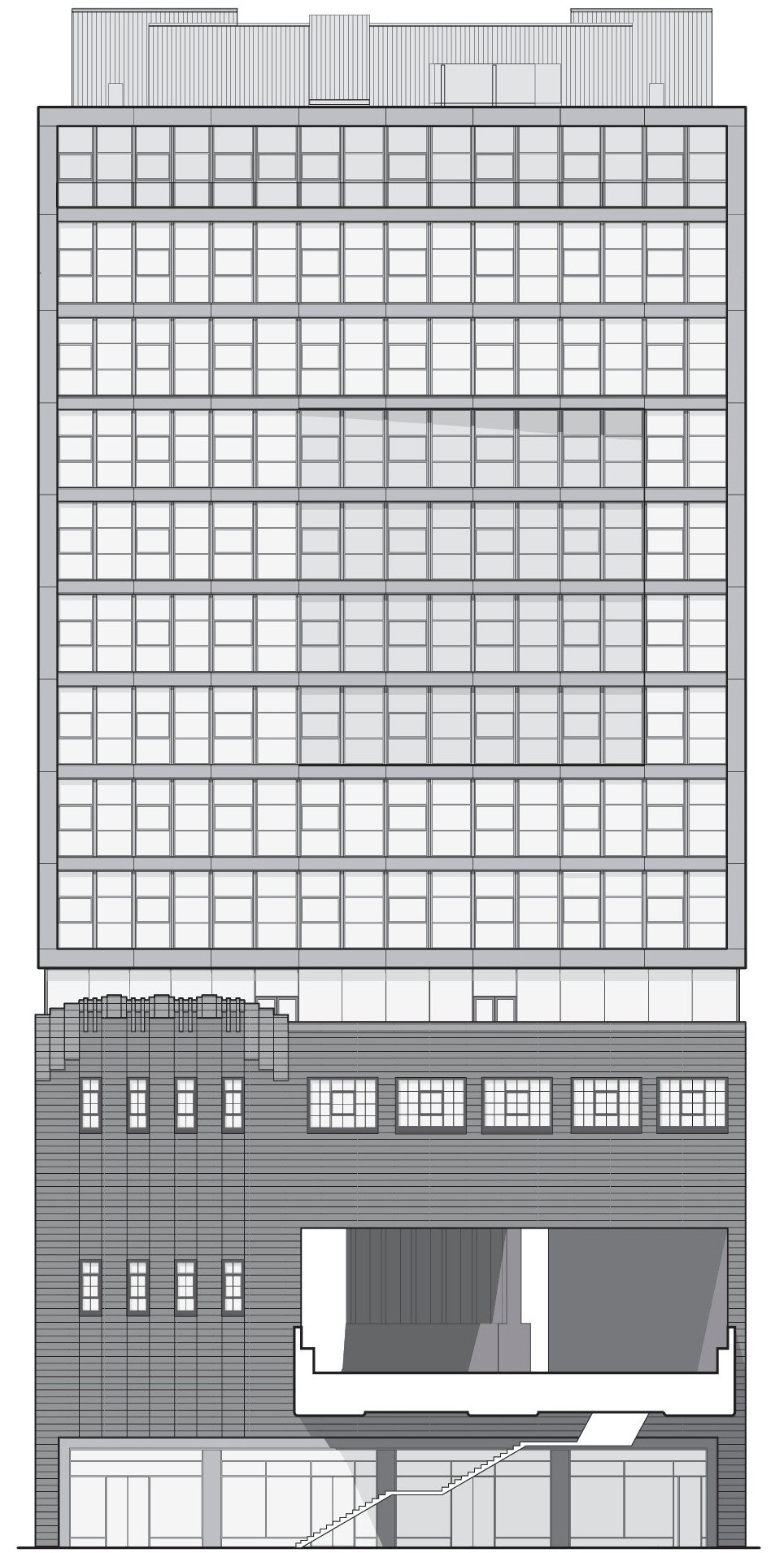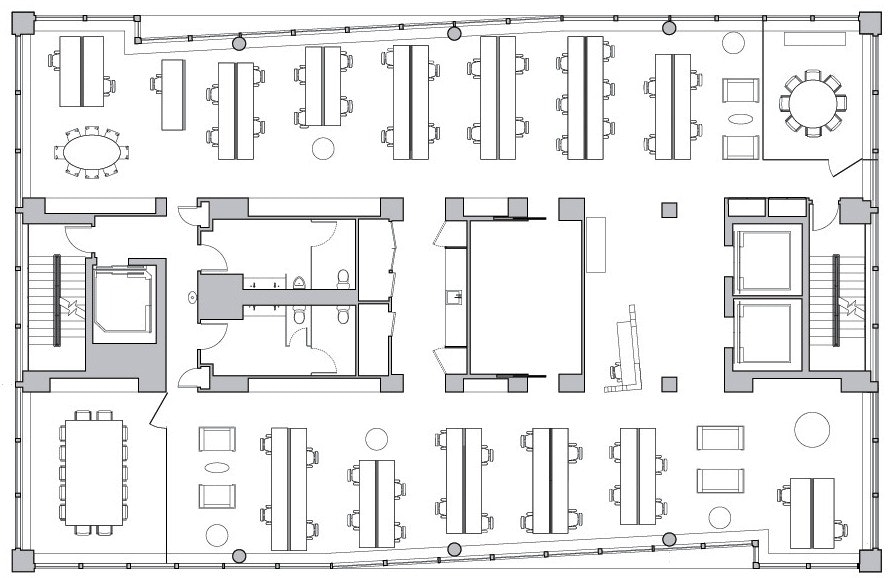
The High Line Building
100,000 square feet
15 stories
New York, New York
2011


Many of the original buildings that once lined the High Line have been demolished recently to make way for new architectural spectacles. The High Line Building, however, embraces the history of the elevated railroad with a design that is literally and figuratively tied to the structure for which it is named.

Located just outside the western boundary of the Gansevoort Market Historic District, the High Line Building’s new glass and steel tower rests on a former meatpacking plant pierced through by the industrial railroad turned postindustrial park. While preservation of the 1938 Art Deco building was not required, it is the only structure actually tied into the railroad trestle, and destroying it would have meant losing a part of New York City history. Reusing it, on the other hand, is both a respectful and historically apt gesture. Like the High Line itself, the High Line Building illustrates the cultural and economic value of preserving and reinvigorating industrial structures with thoughtful, contemporary interventions.
The 103-foot-long, 30-foot-high tunnel passing through the old meatpacking plant initially raised concerns about structural loads, but MA’s design team worked closely with engineers to ensure the rail platform and former plant could support the overbuild. To accommodate this unique condition, the tower’s vertical core is split into two components. This division has the added effect of giving the building a striking, transparent quality and a sense of lightness that is heightened by the single-story glass enclosure separating the tower and base. The steel-framed addition and the original brick structure are otherwise unified by a contemporary charcoal coloring that ties together the two principal volumes, as well as the neighborhood’s industrial past and its upscale future.
Traditionally, early buildings in the Meatpacking District were adapted rather than demolished as the neighborhood evolved. The High Line Building continues this practice even as it helps to establish a new architectural scale.


Details








